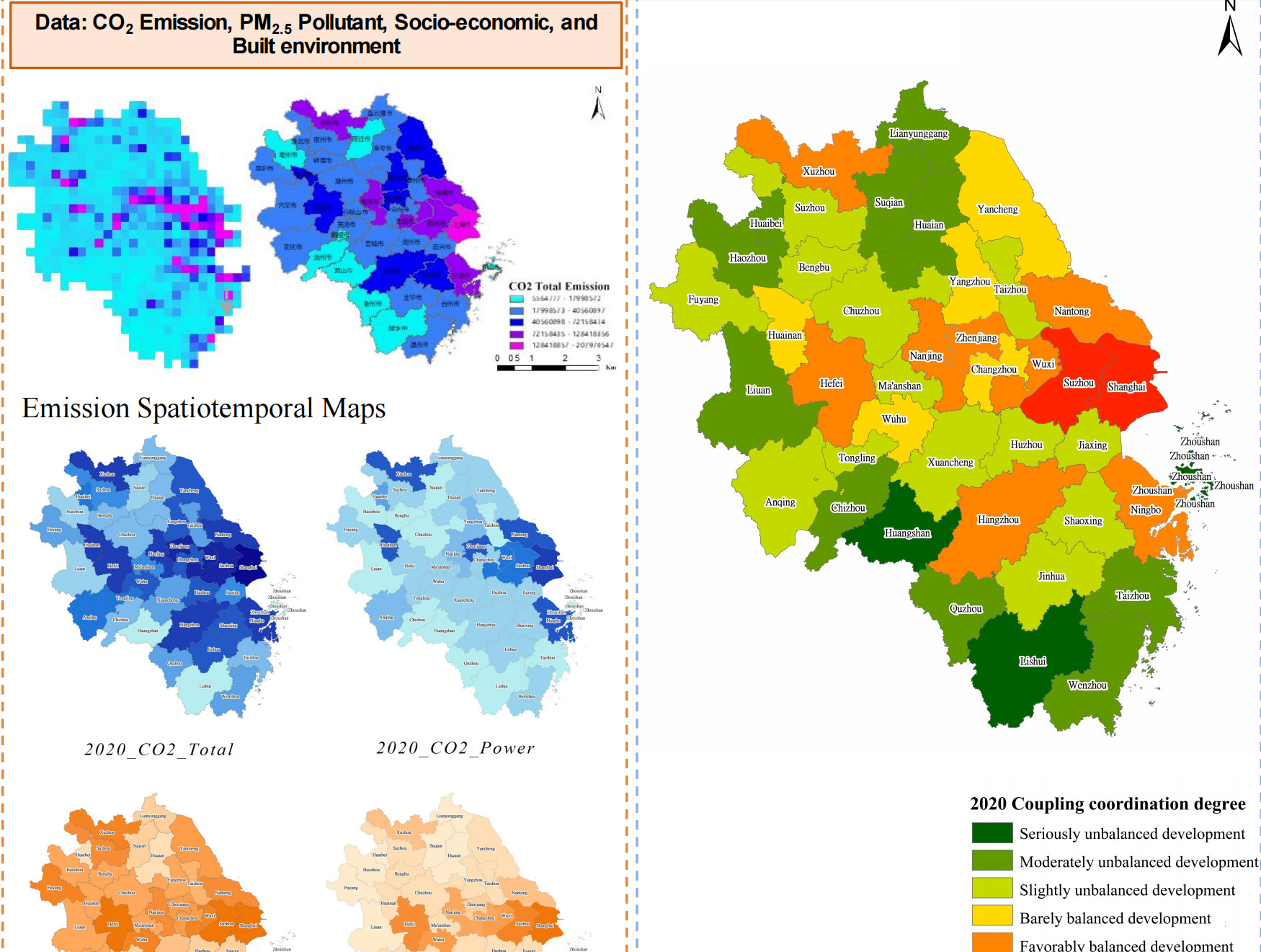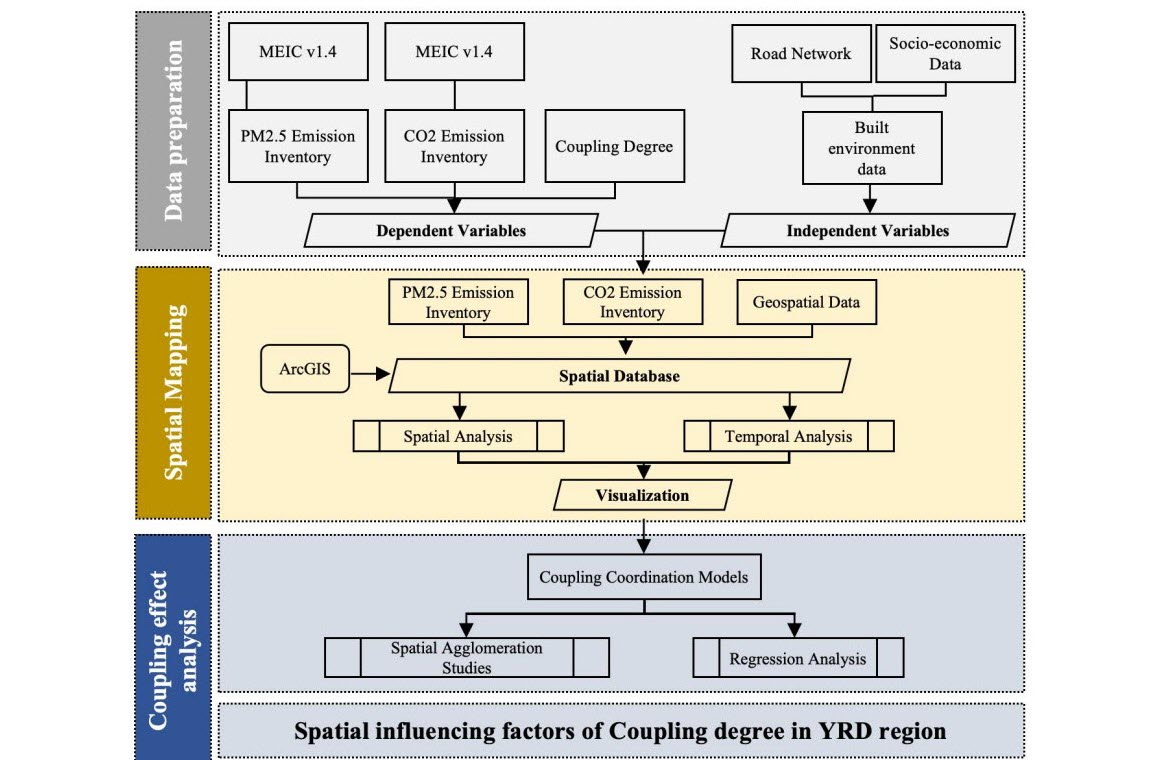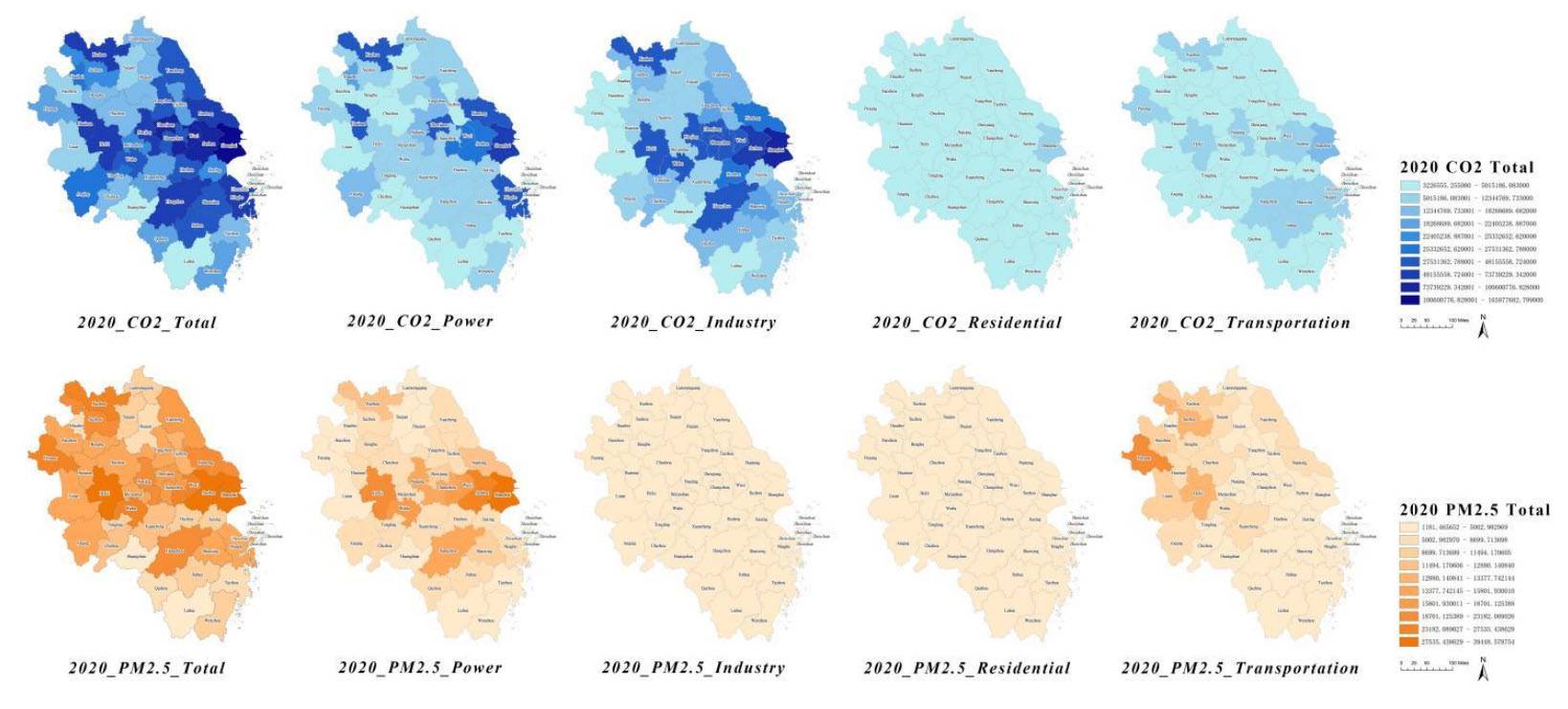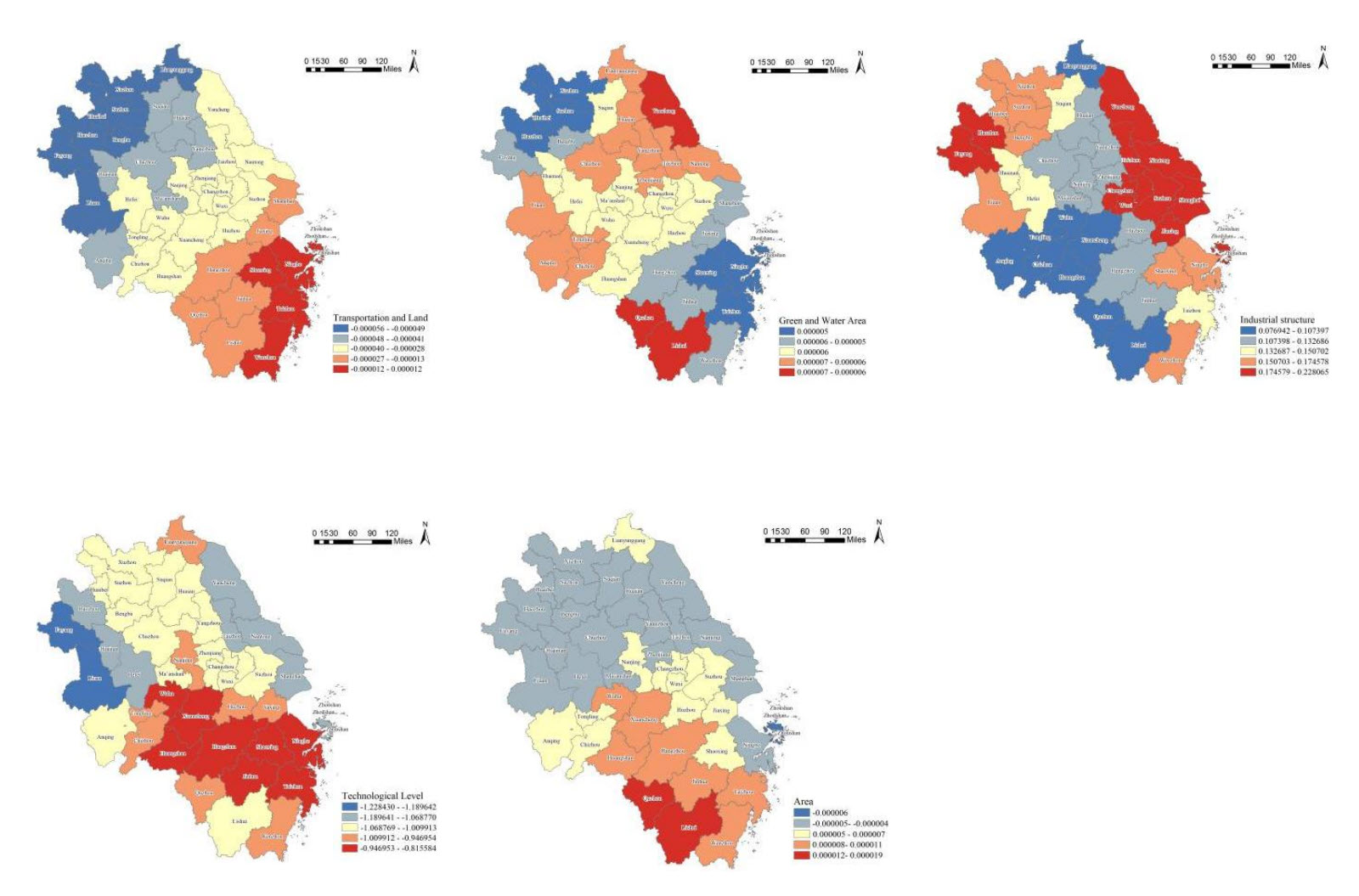Study of the Coupling Effect of CO2 and PM2.5 Emissions: A Case Study of Yangtze River Delta, China
CO2与PM2.5排放耦合作用研究:以中国长三角地区为例
Keywords
PM2.5, CO2, Coupling effect, Yangtze River Delta, Carbon mitigation, Carbon neutrality
PM2.5,CO2,耦合作用,长三角,碳减排,碳中和
Highlights
• The study assessed coupling degree of CO2 emissions and PM2.5 concentrations in the Yangtze River Delta region, China.
• 本研究评估了中国长三角地区CO2排放与PM2.5浓度的耦合程度。
• 耦合程度在2013年出现下降,并在2018年恢复。 • In 2020, ten cities out of the 41 examined demonstrated a balanced coordination.
• 2020年,在研究的41个城市中,有10个城市表现出协调平衡状态。 • Shanghai stood out as the sole city demonstrating high-quality coordination.
• 上海是唯一一个表现出高质量协调的城市。
Introduction
The primary driver of climate change is the ever-increasing release of greenhouse gases, with carbon dioxide (CO2) being the main culprit. As a result, CO2 emission and particulate matter (PM2.5) concentration have become a significant concern for nations that are working towards mitigating the negative impacts of air pollution and climate change. Developing countries’ primary sources of greenhouse gases and air pollution are CO2 and PM2.5. These emissions are driven by the rapid growth of their economies, industrialization, and their continued reliance on conventional energy sources (World Health Organization, 2019). Air pollution has been further exacerbated by the rapid expansion of populations in these regions, leading to increased emissions in countries such as Indonesia, India, and China. The two nations with the highest emissions rates, China and India, have been making significant efforts to mitigate greenhouse gas emissions and manage air particulate matter, and their experiences have highlighted the major challenges faced by developing nations in addressing these global issues.
气候变化的主要驱动因素是温室气体排放量的持续增加,其中二氧化碳(CO2)是罪魁祸首。因此,CO2排放和细颗粒物(PM2.5)浓度已成为各国在努力减轻空气污染和气候变化负面影响过程中重点关注的问题。发展中国家温室气体和空气污染的主要来源是CO2和PM2.5。这些排放由经济快速增长、工业化以及持续依赖传统能源所驱动(世界卫生组织,2019年)。这些地区人口的迅速扩张进一步加剧了空气污染,导致印度尼西亚、印度和中国等国的排放量增加。排放量最高的两个国家——中国和印度,一直在努力减少温室气体排放和管理空气颗粒物,它们的经验凸显了发展中国家在应对这些全球性问题时所面临的主要挑战。
A number of climate-related studies have found a coupling effect have demonstrated a coupling effect between PM2.5 and CO2, highlighting the interconnectedness of these two pollutants. For example, Dong et al. found that the reduction of CO2 emissions can lead to a substantial decline in PM2.5 emissions. The Intergovernmental Panel on Climate Change (IPCC) found that there were co-benefits when CO2 and PM2.5 were viewed as homogeneous. Other studies proved that CO2 and PM2.5 were homogeneous and synchronous by testing both in a model and finding that efforts to reduce CO2 significantly contributed to a decrease in PM2.5. Furthermore, research has identified a significant synergistic effect between CO2 and PM2.5 from coal consumption: These studies found that coupling efforts to reduce PM2.5 from coal consumption could have profound impacts on public health.
多项气候相关研究发现了PM2.5与CO2之间的耦合效应,凸显了这两种污染物之间的相互关联性。例如,Dong等(2019年)发现,减少CO2排放可以显著降低PM2.5排放。政府间气候变化专门委员会(IPCC)发现,当将CO2和PM2.5视为同质时,存在共同效益。其他研究通过模型测试证明,CO2和PM2.5是同质且同步的,减少CO2的努力显著有助于降低PM2.5。此外,研究还发现,煤炭消费产生的CO2和PM2.5之间存在显著的协同效应:减少煤炭消费中PM2.5的努力对公共健康可能产生深远影响。
Past research that used spatial analysis identified a correlation between CO2 and PM2.5 emissions and shed light on the mechanism of carbon pollution homogeneity, investigations into the coordinated coupling of CO2 and PM2.5 at the spatial scale have been relatively scarce. This shortage of studies can be attributed primarily to inadequate data availability and quantifiability, and to the need for more research and application paradigms that are both standardized and reflective of local characteristics. These intertwined factors collectively cause a bottleneck in research efforts. Furthermore, past studies predominantly concentrated on the regional level and broader, with the highest resolution typically limited to administrative divisions at the county level. This limitation has made it challenging to fully understand the coupling dynamics between the two emissions in urban settings. To address these gaps, this study aims to analyze the spatial patterns of CO2 and PM2.5 emissions and identify the spatial driving factors that influence the coupling degree of CO2 and PM2.5 emissions in the YRD region.
以往采用空间分析的研究揭示了CO2和PM2.5排放之间的相关性,并阐明了碳污染同质性的机制。然而,关于CO2和PM2.5在空间尺度上的协调耦合研究相对较少。这一研究短缺主要归因于数据可用性和可量化性的不足,以及需要更多既标准化又反映地方特色的研究和应用范式。这些相互交织的因素共同造成了研究工作的瓶颈。此外,过去的研究主要集中在区域层面及更广泛的范围,最高分辨率通常限于县级行政区划。这一限制使得难以全面理解城市环境中两种排放之间的耦合动态。为填补这些空白,本研究旨在分析长三角地区CO2和PM2.5排放的空间模式,并识别影响CO2和PM2.5排放耦合程度的空间驱动因素。
Publication
Wengin Chung, Chao Liu. (2024).
Study of the Coupling effect of CO2 and PM2.5 emissions: A Case Study of Yangtze River Delta, China.
Heliyon.
https://doi.org/10.1016/j.heliyon.2024.e41616



